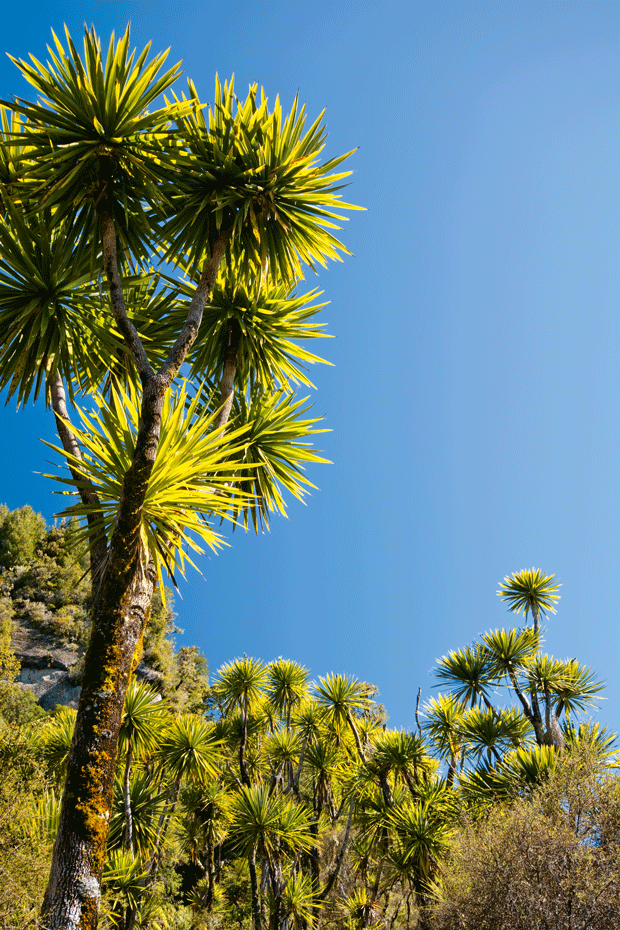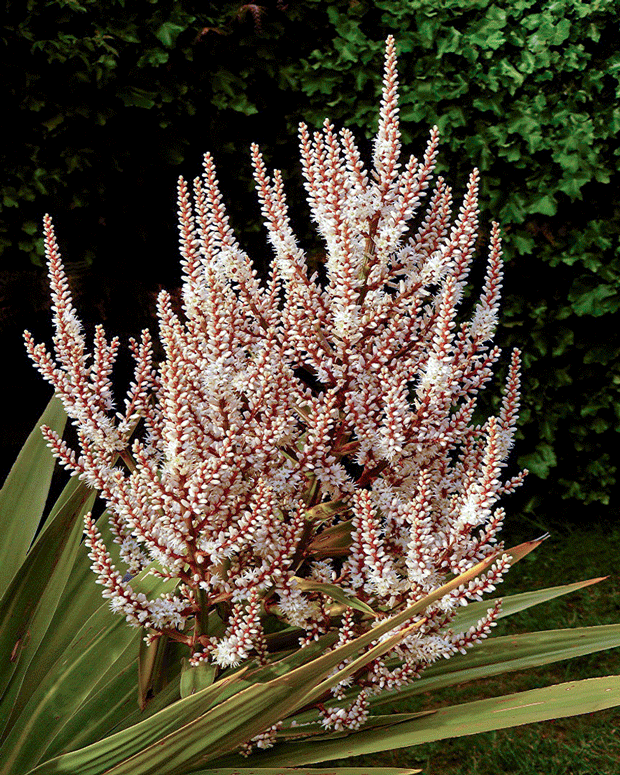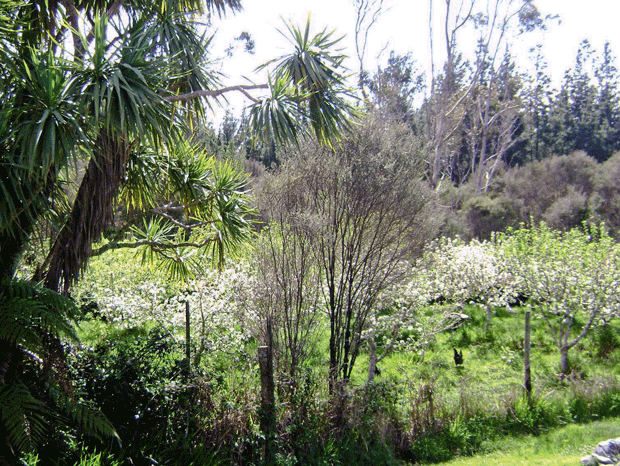3 secrets to getting the best from cabbage trees

The cabbage tree is the gift that keeps on giving, if you know its secrets.
Words: Ben Gaia
If you’ve got cabbage trees in your garden or orchard, you probably don’t think of them fondly. The leaves are always falling and they always seem to end up wound around your mower.
1. Turn windfall leaves into firelighters

A little effort with the rake and a minute or two spent tying them into knots or bundles will give you a never-ending supply of firelighters for winter as the leaves are full
of turpentine oil and easily burn.
2. They are hardy shelter trees

This fast-growing native is useful for instant height in a new shelter belt. They’re also very hardy to salt winds and cold so they do well by the seaside or inland, as long as there is no settling snow which will freeze their middles out.
How hardy are they? They grow back after felling, and after a forest fire. I have seen a trunk wash up at high tide and grow into a tree on the beach. They grow in asphalt. They are also hard to kill which makes them great survivors for native afforesting. When they get too tall you simply chop the main stem off and they soon sprout into about four new branches, turning an ugly stump into a cheerful new cabbage tree.
The sharp, dense, lovable nodding leaf heads catch and filter the wind making effective low wind shelter, as part of a mixed native hedge. Spring flowers fill the orchard with a dizzy tropical scent, attracting pigeons and bees. If the ti kouka flowers early, it’s going to be a hot summer.
3. Eat them

The best thing about the cabbage tree is it’s edible. They are often found in groves in the Far North which are rumoured to be tapu (sacred) and in the old clearance days, Maori logging crews would refuse to cut them because Cordyline australis was one of the best, most delicious sources of carbohydrate known to the Maori farmers.
It is basically a cold climate sugar cane tree and it used to be tended in groves. You can plant large branch cuttings which strike as easily as willow. When the young trees are about 1.5m high, they can be dug up and the root detached will resemble a 60cm long, giant beige carrot. The top can be replanted to sustain the grove. You wash the root, chop it into parsnip-sized chunks and boil for at least two hours.
Have a taste and you’ll be pleasantly surprised by how delicious it is. Anyone who has gnawed on a hunk of sugar cane in the tropics will recognise the flavour, and the experience is rather like having a giant soft stick of rock to gnaw on – it’s very popular with the kids on a long rural holiday.
The tapu rules were all about preserving the food source for future generations of consumers. There were strict rules about seasons of planting and harvest, and how to treat the plants, which were considered to be alive and possessing a personality of their own. They self-seed readily from large old trees, and can become a weed in lawns. Pull them up and replant along a bank to provide future mokopuna with something for their sweet tooth.
About the author
Ben Gaia grows trees in the extreme climate of the West Coast of the South Island and runs a mail order nursery for organic fruit and forestry trees, www.dialatree.co.nz
Love this story? Subscribe now!
 This article first appeared in NZ Lifestyle Block Magazine.
This article first appeared in NZ Lifestyle Block Magazine.
